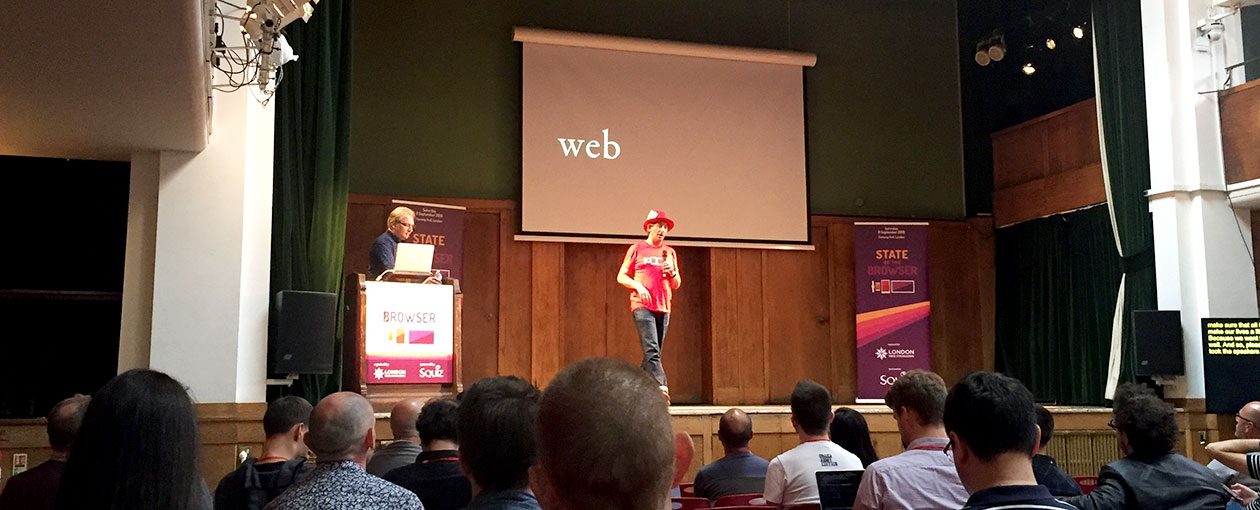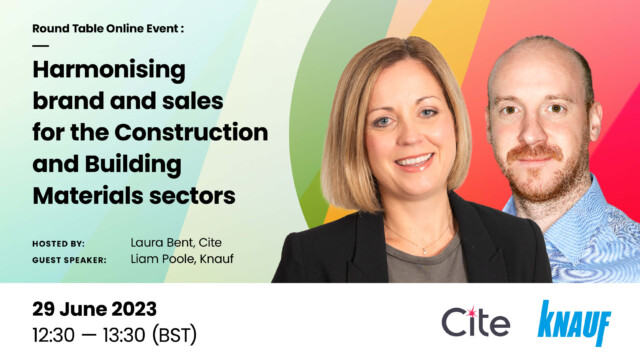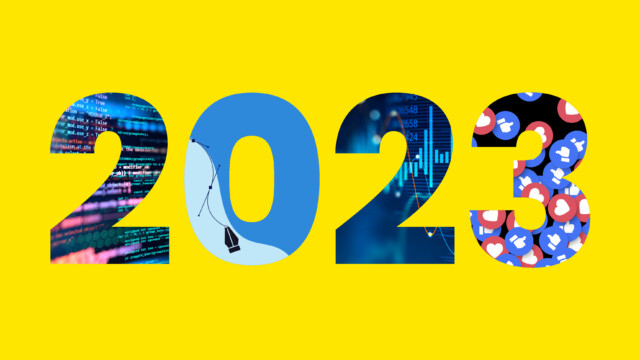State of the Browser 2018

On Saturday I was lucky enough to get the chance to attend State of the Browser 2018, a conference organised by London Web Standards that connects browser vendors and the web community. One of things that attracted me to this conference was the pedigree of speakers they had gathered and the broad range of subjects being presented.
Here’s a quick rundown of what went down during the various talks.
First up was Michelle Barker talking about CSS Grids and CSS Variables, two modern front-end development techniques that look to transform how web layouts can be constructed. This was a really informative talk with some great tips to takeaway and start experimenting.
Dr. Ben Livshits from Brave then took to the stage for a fascinating talk on the potential future of the web browser. Brave has been gaining media attention recently for its emphasis on privacy-by-default browsing. Ben also spoke about the concept of Basic Attention Token, a blockchain-based digital advertising system that could genuinely revolutionise the web. The concept sees users being compensated, in the form of micropayments, for watching advertising. Users can then use their accrued funds in order to gain access to content they desire – be it from behind a paywall or perhaps the latest blockbuster movie.
Sara Vieira was next up with an enthusiastic and hilarious talk reminding developers of their responsibility in using semantic HTML and web standards. Her talk analysed segments of front-end code from Twitter and highlighted where simple improvements could be so easily made. Sara’s presentation style and jokes drew many laughs and left the audience on a real high.
Next to take the stage was Rowan Merewood, a developer advocate from Google. Rowan spoke at depth regarding what constitutes as an “app” in this day and age. His talk looked at PWAs, Instant Apps and native Android apps but also focused on decisions made by developers and business owners.
Ada Rose Cannon from Samsung Internet was next with a talk about WebXR – an umbrella term for the use of VR and AR on the web. Ada showcased many cutting edge visual technologies such as WebVR and WebGL, it was a fascinating insight in to the possibilities of these emerging technologies. It certainly made me want to reach for the Google Cardboard we have in the office, having only previously experimented with this technology very briefly.
That wrapped up the morning session. A quick dose of fresh air and bite of lunch in the local park was needed before heading back to see what the afternoon would bring.
Ruth John kicked things back off with an uptempo look at web audio visualisations. Ruth analysed various performance issues she’d experienced when creating visual animations based on an audio input feed. She also spoke about many of the experimental APIs found within CSS Houdini. The talk showcased the benefits of using Web Workers to run JavaScript in the background … insightful stuff.
Next was Chris Mills from Mozilla with a really interesting talk on the plethora of new design/development tools available in the Firefox browser. Chris showed off tools like the Grid Inspector, the Animation Inspector, the Font Editor, Filter Editor and Accessibility Inspector amongst others. I must admit that it’s been a few years since I’d used Firefox as my main browser, but Chris’ talk will certainly make my take another look at what Firefox offers.
Christian Heilmann from Microsoft then launched in to an amusing talk about how developers can ensure the web is better for everyone. This talk highlighted the massive broad range of technologies that the average web developer needs to know. It also looked at why shortcuts are often made and what we can do to develop smarter. Christian showcased webhint.io, a tool designed to highlight where improvements can be made to a site’s accessibility, speed, security and more. Something we’re going to look at implementing within our build process here at Cite.
After a quick coffee break Jeremy Keith was on stage for the penultimate talk of the day. Jeremy is someone who I’ve followed for many years and is a well known advocate of Web Standards and accessibility. This fascinating talk looked at how standards become implemented in many walks of life – from shipping containers to the Gregorian calendar. A really thought provoking talk.
Charlie Owen was the final speaker of the day with a talk that really resonated. The pace of change in all things web can be frightening, developers can often feel behind the curve if they’re not seen to be working with the freshest and latest technology stack. But Charlie reminded people that not everyone works at Facebook! The most average internet enabled device in the world is a Moto G4, a mid-range handset compared with the latest release from Apple. Charlie shared some great takeaway tips on keeping things simple, building with semantics and making things available to 100% of users.
And that was that. A fantastic day overall with so much information to absorb. The conference was superbly run by the organisers and I’ll certainly be looking to head back in 2019!



